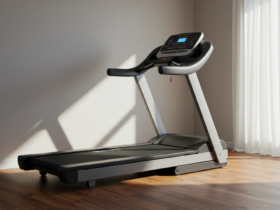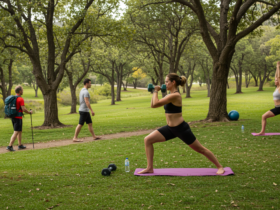Intro of Air assault fitness training tips
If you’re considering attending Air Assault School, you’re preparing for one of the most physically demanding military training courses out there.
Whether you’re aiming to join the 101st Airborne Division or preparing for the Army Air Assault School, passing this course requires strength, stamina, and mental resilience. But don’t worry, this guide is here to provide you with actionable Air Assault fitness training tips to help you succeed.
In this article, we’ll dive into everything you need to know—from the basics of Air Assault fitness to specific training strategies for passing the obstacle course, ruck marches, and endurance runs. Let’s get started!
What is Air Assault Fitness Training?
Understanding Air Assault School
Air Assault training is intense. It’s designed to prepare soldiers for combat operations that require speed, strength, and endurance. The Sabalauski Air Assault School and other similar schools are no joke, and if you’re aiming to join the US military or enhance your fitness for combat assault operations, you’ll need to excel in multiple areas, including cardiovascular fitness, strength, and mental toughness.
- Duration of Air Assault School: Typically lasts 10 days, with physical training from the very first day.
- Physical Demands: From 5-mile runs to 12-mile ruck marches and rope climbs, it’s designed to push you to your limits.
You’ll be training for various tasks such as sling load operations, rappelling, and rope climbs. Mastering these activities is critical for completing Air Assault successfully.
Core Fitness Requirements for Air Assault School
1. Cardiovascular Fitness: Your Foundation for Success
One of the first areas to focus on is cardiovascular fitness. You’ll be expected to run, march, and perform high-intensity exercises in quick succession. You’ll need to build your endurance to survive, especially when completing tasks like the 5-mile run and 12-mile ruck march.
Cardio Training Tips:
- Interval Training: Incorporate high-intensity interval training (HIIT) into your routine to build speed and stamina.
- Long Runs: Aim for long-distance runs starting at 3-4 miles and gradually increase to 5+ miles.
- Hill Sprints: Train by running on hills to build strength and improve your ability to tackle inclines during ruck marches.
By building your endurance, you’ll be better prepared for the physical challenges of Air Assault training, such as running while carrying heavy weight during the ruck march.
2. Strength for Obstacle Courses and Combat Operations
The obstacle course is one of the most challenging aspects of Air Assault School. You’ll need to develop overall strength, especially in your upper body, to handle rope climbs, rappelling, and other demanding tasks.
Strength Training Tips:
- Pushups: Incorporate various types of pushups (regular, incline, decline) to target different muscle groups.
- Pull-ups: A must for upper body strength. Start with assisted pull-ups if necessary and gradually increase repetitions.
- Core Workouts: Exercises like planks, Russian twists, and leg raises will help improve your core strength for climbing ropes and performing other physical tasks.
Step-by-Step Air Assault Fitness Training Tips
1. Start with Basic Fitness: Build a Solid Foundation
Don’t Rush the Process
The first step in preparing for Air Assault School is building a solid base level of fitness. If you’re new to physical training, start with simple activities like walking, jogging, and basic bodyweight exercises.
As you progress, add more complex tasks to your routine, such as interval training and ruck marches. Start with lighter rucks (20-30 lbs) and gradually increase the load as your body adapts.
2. Develop Strength for Specific Air Assault Tasks
Obstacles and Rope Climbing
During the obstacle course, you’ll be asked to climb ropes, scale walls, and rappel down. To prepare for this:
- Practice Rope Climbing: You can use a rope at a local gym or park. Work on climbing with your legs and feet while keeping a strong grip with your hands.
- Rappelling Practice: If possible, find a location to practice rappelling to familiarize yourself with the technique and feel.
Ruck Marching
One of the most grueling tasks during Air Assault training is the 12-mile ruck march. This will test your stamina and endurance.
- Ruck Training: Start with a light ruck (about 20-30 lbs) and gradually increase the weight. Aim to complete short ruck marches (3-5 miles) before gradually increasing the distance.
- Footwear: Invest in durable, comfortable boots designed for long-distance marches. Proper socks are also key to preventing blisters.
Focus on Endurance and Cardiovascular Fitness
3. Cardiovascular Training: Running and Beyond
When preparing for Air Assault School, building endurance and cardiovascular fitness is essential. The physical tests you’ll face, such as long-distance runs and grueling ruck marches, demand high stamina and the ability to push through fatigue.
Running is a key part of your cardio training, but it shouldn’t be the only focus. To ensure your body is prepared for the variety of physical challenges you’ll encounter, it’s important to include different forms of cardiovascular exercise in your routine.
Why Cardiovascular Fitness Matters
Air Assault School will test your endurance through tasks like the 5-mile run and the demanding 12-mile ruck march. To succeed, you need to improve your aerobic capacity, which helps your heart and lungs deliver oxygen to your muscles efficiently. This is crucial not only for running but for tasks like rope climbs, obstacle courses, and fast rope drills that require explosive power and sustained stamina.
By improving your cardiovascular fitness through a combination of running and other cross-training activities, you’ll build overall endurance, reduce the risk of overuse injuries, and improve recovery time.
Cross-Training Ideas for Better Endurance
In addition to running, there are several cross-training activities that can improve your overall cardiovascular fitness while working different muscle groups and reducing the risk of injury. These activities help you build stamina in different ways and target areas of fitness that running alone can’t. Here are three excellent cross-training options to incorporate into your Air Assault prep:
1. Swimming: Low Impact, High Endurance
Swimming is an outstanding way to build cardiovascular endurance while also offering low-impact exercise. Unlike running, which can put a lot of stress on your joints, swimming works your entire body with minimal risk of injury. It’s a fantastic option for building stamina and maintaining cardiovascular health without the added stress on your knees and hips.
- Why it’s effective: Swimming improves your heart and lung capacity while working your arms, legs, and core. The resistance of water makes swimming a full-body workout that builds endurance across multiple muscle groups.
- How to incorporate it: Try to swim for at least 30 minutes, 2-3 times per week. Focus on a combination of strokes (freestyle, backstroke, breaststroke) to engage different muscle groups and improve your overall endurance.
- Tip: Incorporate interval training in the pool by alternating between sprints and slower, steady swimming. This mimics the variations in intensity you’ll experience during actual training or combat scenarios.
2. Cycling: Low-Impact Stamina Builder
Cycling is another excellent form of cardio that builds endurance and leg strength. It’s especially beneficial for improving your aerobic capacity without the joint strain caused by running or rucking. Like swimming, cycling helps you improve cardiovascular endurance while being gentle on your body.
- Why it’s effective: Cycling targets your lower body, particularly your quads, hamstrings, and calves. It helps build muscular endurance, which is key when you’re carrying weight during long-distance marches or climbing obstacles.
- How to incorporate it: If you have access to a bike, aim for 30-60 minute rides at a moderate pace, 2-3 times a week. Include some hill climbing for a more intense workout that mimics the challenges you’ll face on the ruck marches.
- Tip: Incorporate interval cycling by alternating between sprinting and recovery periods. This mimics the intervals of intensity that you’ll experience in the physical tests during Air Assault School.
3. Rowing: Full-Body Workout
Rowing is another fantastic cross-training option that provides a full-body workout, which is crucial for the physical demands of Air Assault School. It builds cardiovascular fitness while strengthening the muscles you’ll need for rappelling, rope climbs, and handling sling loads.
- Why it’s effective: Rowing engages your upper body, core, and legs in a way that simulates the pulling motions you’ll need for rope climbs and obstacle navigation. It’s also a great way to build stamina and endurance in your arms and back, which are essential for completing physical tasks in Air Assault School.
- How to incorporate it: If you have access to a rowing machine, aim for 20-30 minute rowing sessions. Vary your pace to include both steady-state rowing and high-intensity intervals.
- Tip: Focus on proper technique, ensuring that you’re driving with your legs and not overexerting your arms. Proper form is key to preventing injury and getting the most out of each session.
Maximizing Cardiovascular Fitness for Air Assault
In addition to running and cross-training, there are several tips that can help you maximize your cardiovascular endurance and performance during Air Assault School:
Gradual Progression: Start slow and gradually increase the intensity and duration of your workouts. For instance, if you’re just starting to run, aim for shorter distances and slowly increase as you gain stamina.
Consistency: Cardio training requires consistency to build endurance. Make sure you’re hitting your cardio sessions regularly and avoid skipping workouts. Aim for at least 3-4 sessions a week for maximum results.
Incorporate High-Intensity Interval Training (HIIT): HIIT is one of the best ways to improve both speed and endurance. Incorporating HIIT into your routine, whether through sprints, cycling, or rowing, can help you increase your capacity for high-intensity efforts.
Recovery is Key: Cardiovascular fitness requires not just effort, but also recovery. Don’t overtrain; allow your muscles and cardiovascular system to recover between workouts. Use rest days for light, low-impact activities like walking or swimming.
Air Assault School Prep: Day 1 and Beyond
1. Day Zero and the First Few Days
Day 0 marks the beginning of your training, and it’s not easy. You’ll be thrown right into the physical training (PT) sessions, sling load operations, and an inspection of your gear, including your combat uniform, rucksack, and packing list. It’s essential to be prepared from day one, as the instructors will evaluate your physical and mental toughness.
2. The First 5 Miles: Running and Rucking
You’ll need to complete a 5-mile run on the first day to assess your endurance. This is followed by a ruck march with a pack that weighs 35 lbs or more. To prepare for this:
- Gradually Build Mileage: Increase the distance of your ruck marches by one mile per week until you can handle the full 12-mile march.
- Work on Pace: Pacing is critical for long-distance running and rucking. Start slower and gradually build up your speed to avoid burning out early.
Common Mistakes to Avoid in Air Assault Fitness Training
1. Overtraining
It’s easy to get excited and push yourself too hard in the early stages. However, overtraining can lead to injury or burnout. Make sure to include rest days and focus on recovery between intense workouts.
2. Ignoring Mobility and Flexibility
Skipping stretching or mobility exercises is a common mistake. These exercises help improve your flexibility, reduce the risk of injuries, and allow you to move freely in tight spaces or while climbing.
3. Skipping Nutrition and Hydration
Proper nutrition is a key factor in succeeding in Air Assault School. Eating a balanced diet of carbohydrates, protein, and healthy fats will provide the energy you need to push through each session. Don’t forget to hydrate, especially during long runs and ruck marches.
You can also read How to choose the right treadmill for your home gym
Nutrition Tips for Air Assault Training
1. Pre- and Post-Workout Nutrition
Your pre-workout meal should be rich in carbohydrates for sustained energy. After a tough training session, refuel with a combination of protein and carbs to help muscles recover.
- Pre-Workout Meals: Oatmeal with fruit, whole-grain toast with peanut butter, or a smoothie.
- Post-Workout Meals: Grilled chicken, rice, and vegetables, or a protein shake with a banana.
2. Hydration
Staying hydrated is essential, especially when training in hot conditions. Drink water before, during, and after workouts. Consider adding electrolyte drinks for longer training sessions.
Recovery and Injury Prevention
1. Active Recovery
On rest days, focus on active recovery: gentle stretching, light walking, or swimming. These activities help your muscles recover without putting too much strain on them.
2. Foam Rolling and Stretching
Foam rolling is an effective way to release muscle tension and improve flexibility. Add this to your post-workout routine to prevent tightness and injuries.
3. Listening to Your Body
If you feel any sharp pain or discomfort, stop and rest. Pushing through injury can lead to longer-term problems. Make sure to get enough sleep (7-9 hours per night) for full recovery.
My Opinion| Air assault fitness training tips
Preparing for Air Assault School is no small feat. It requires dedication, strength, stamina, and mental toughness. By following these fitness training tips, focusing on cardiovascular endurance, strength, and mental resilience, you’ll be ready for the toughest 10 days of your military career. Consistency, proper nutrition, and active recovery are all key to achieving success.
Remember, the journey is challenging, but with hard work, attention to detail, and commitment, you can complete Air Assault School and earn your badge. Stay focused, and good luck on your training!

















Leave a Reply
View Comments